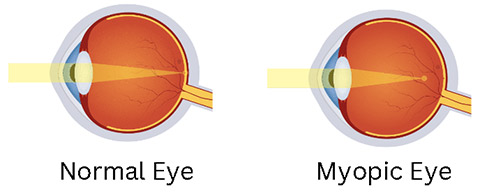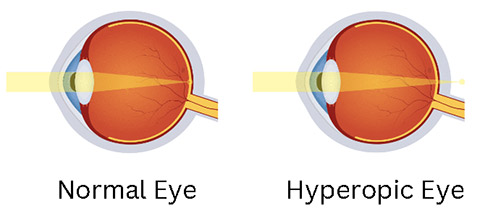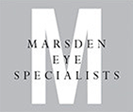What is refractive error?
In a normal eye, light passes through all the optical structures such as the cornea and the lens to focus on a single point on the retina which allows us to see clearly and have the best vision possible. Refractive errors are optical imperfections in the eye which cause light to not focus on its intended spot on the retina and that causes blur. Refractive error is measured in a unit called diopters (D) and using clinical reasoning and machines can be refined and made into glasses to correct the vision.
Types of Refractive Error
Myopia is when your eye is longer than usual or the cornea and lens have too much focusing power, light rays focus in front of the retina instead of on it. Myopia or shortsightedness means you have a hard time seeing objects at a distance but you can see things without any correction up close. It is often corrected with a concave lens so it pushes the light rays from in front of the retina forward so you can see clearly. Myopia can be categorized into the following categories:
- mild myopia 0 to -3.0D
- moderate myopia is around -3.25D to -6.0D
- high myopia is anything above -6.0D

Hyperopia is when your eye is shorter than usual, or the cornea and lens lack the necessary focusing power, light rays focus beyond the retina. Hyperopia or farsightedness means you cant see close objects clearly. It is often corrected with a convex lens so it brings the light rays from behind the retina forward so you can see clearly. Hyperopia can be categorized into the following categories:
- mild hyperopia 0 to +2.00D
- moderate hyperopia is around +2.25D to +5.0D
- high hyperopia is anything above +5.25D

Astigmatism occurs when the curve of the cornea is uneven – steeper in one direction than the other - like the shape of an egg or the back of a spoon. This uneven curve causes light rays to focus on multiple points on the retina, distorting both near and far vision. This is corrected by placing a lens in the particular orientation of the astigmatism so it corrects the multiple focus points caused by the uneven shape of the cornea. It is important to to note that there are 2 ways to read astigmatism, a plus-cyl and a minus-cyl, but ultimately they can be mathematically transposed and mean the same thing to any eye professional. Astigmatism can be classified as:
- mild astigmatism is 0 to +1.00D
- moderate astigmatism is +1.25D to 2.00D
- high astigmatism is +2.00D to +3.00D
- severe astigmatism is anything greater than +3.00D

Although the categories above isolate refractive error as individual problems, they are more complex and can occur in combination with each other and both eyes can have different prescriptions as well. It is better to visit an eye care professional to determine your refractive error and see what options you have to treat it.
Click here to learn more about refractive surgery and our laser clinic


 n
n